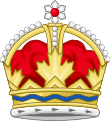 |
|---|
A plebiscite on prohibition was held in Canada on 29 September 1898, the first national referendum in the country's history.[1] The Liberal government had made an election promise in 1896 to provide an opportunity for Canadians to register their opinions about the sale of alcohol.[2] The non-binding plebiscite saw 51.3% in favour of introducing prohibition, although turnout was only 44%.[3] A majority voted for its introduction in all provinces except Quebec, where 81.2% opposed it.
Despite the majority in favour, Prime Minister Wilfrid Laurier's government chose not to introduce a federal bill on prohibition, but not to prevent provinces from passing their own bills. Prohibition laws were passed by provincial governments during the first twenty years of the 20th century. The federal government also moved to ban inter-provincial (mail-order) sale of liquor in some cases.
A 2012 study found that religion was by far the most important factor in determining how Canadians voted, with Evangelicals favoring prohibition, whereas Catholics and Anglicans opposed it.[4] More urbanized districts were less likely to favor prohibition.[4]
- ^ "Referendum". The Canadian Encyclopedia
- ^ Harry Thurston Peck (1899). The International Year Book. Dodd, Mead. p. 153.
- ^ Alfred Emanuel Smith; Francis Walton (1898). New Outlook. Outlook publishing Company, Incorporated. p. 362.
- ^ a b Dostie, Benoit; Dupré, Ruth (2012-10-01). ""The people's will": Canadians and the 1898 referendum on alcohol prohibition". Explorations in Economic History. 49 (4): 498–515. doi:10.1016/j.eeh.2012.06.005.
